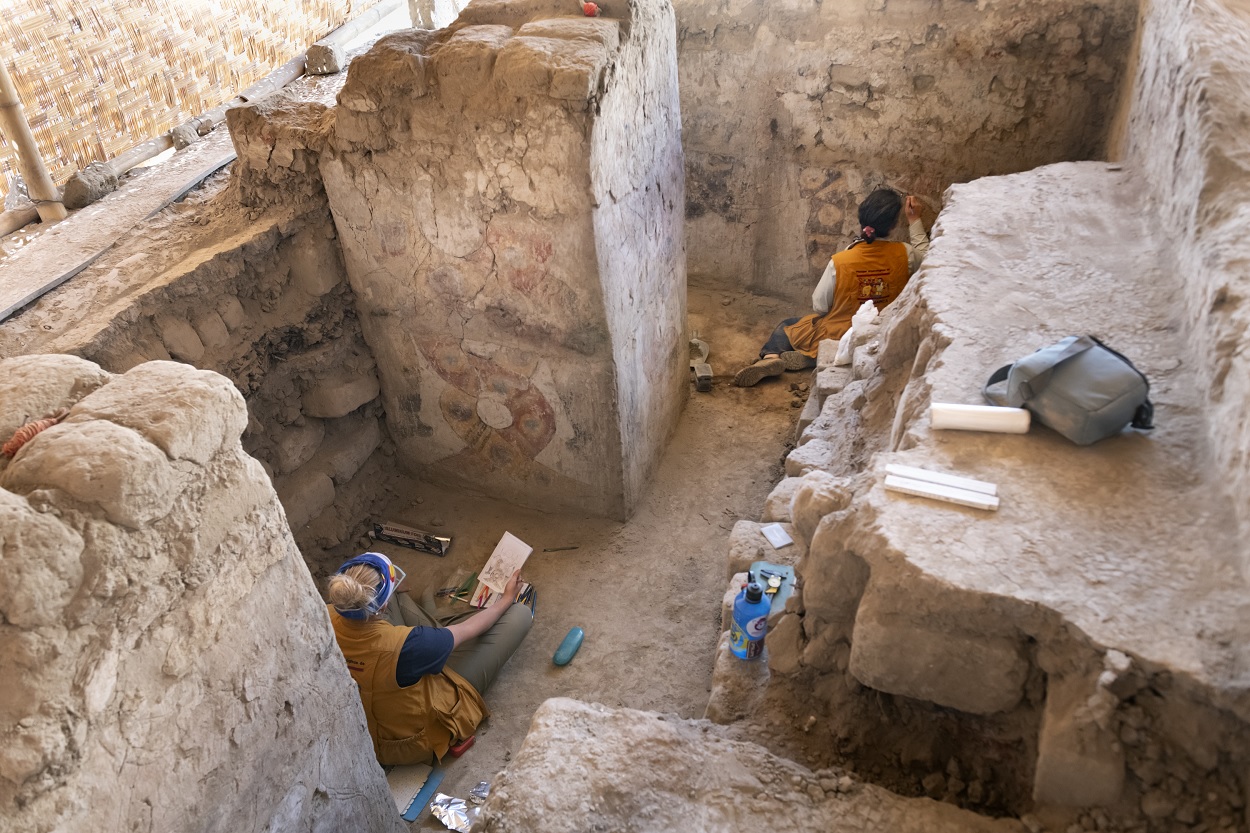Archaeologist excavating the site of Pañamarca in Peru’s Ancash Region have discovered a painted throne room belonging to a powerful Moche woman.
The Moche culture, also known as the Mochica culture, was an Andean civilisation that flourished from the 1st to the 8th century AD. Moche history can be categorised into three main phases: the Early Moche period (AD 100–300 AD), the Middle Moche period (300–600 AD), and the Late Moche period (500–750 AD).
Pañamarca was established during the Late Moche period on the right banks of the Nepeña River and is the southernmost Moche centre.
It primarily served a ceremonial function and contains temples and enclosed plazas atop a granite hill that are adorned with depictions of mythological heroes, fearsome creatures, winged warriors in battle, ritual processions, and scenes of sacrificial offerings.
Excavations have been ongoing since 2018 by the Archaeological Landscapes of Pañamarca project, a collaboration between Peruvian and US researchers.

In this seasons excavation, the researchers have found an adobe pillared throne room that project director Jessica Ortiz Zevallos has named the “Hall of the Moche Imaginary” (Sala del Imaginario Moche).
It is surrounded by walls and pillars depicting four different scenes of a powerful woman, in some instances receiving visitors in procession and, in another, seated upon a throne.
According to the archaeologists, the throne room is associated with the crescent moon goddess and provides physical evidence to suggest that it was dedicated to an elite female ruler of Pañamarca who lived during the 7th century.
The archaeological research program at Pañamarca is supervised by archaeologists and conservators from Peru’s Ministry of Culture headquarters in Lima and the regional office of the Dirección Desconcentrada de Cultura de Ancash.
Header Image Credit : Rick Wicker
Sources : Pañamarca Digital





